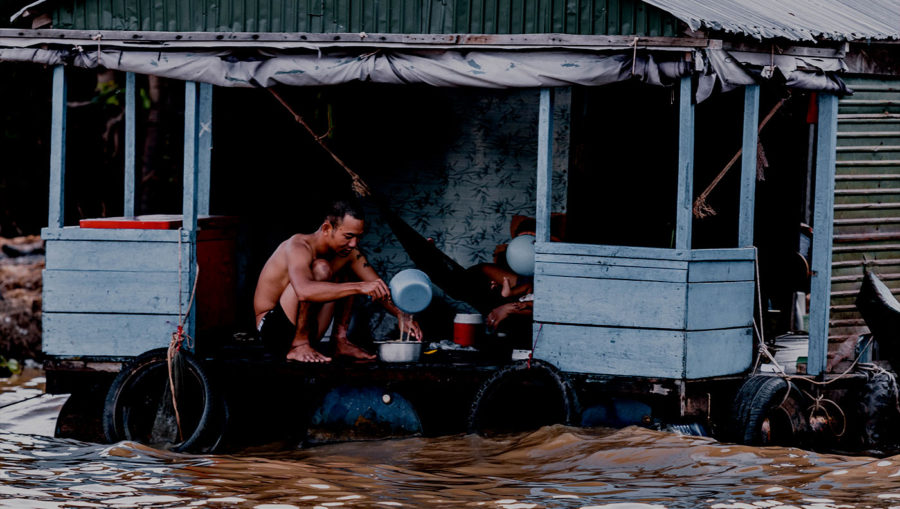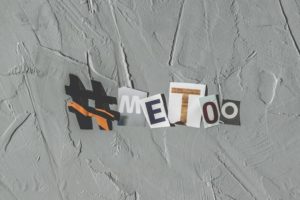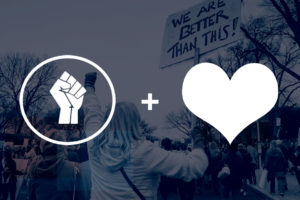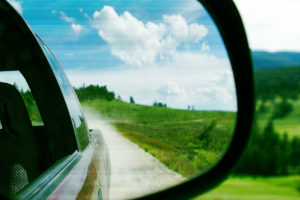Images and narratives from television to film inform audiences what to care about, impact how viewers understand themselves, and show whose stories matter. What we see on our screens shapes our social identities. Unfortunately, our content-rich, consumption-oriented movies, TV, and even news sometimes lack representations of racially diverse characters and stories.
This is especially problematic when it comes to the media’s coverage of natural disasters. In August of 2005, Hurricane Katrina – one of the five deadliest hurricanes in United States history – devastated New Orleans, Mississippi, the Gulfport, and other areas of Louisiana. News media was rightly criticized for their coverage in the wake of Katrina. People of color were called looters while their white counterparts were shown with sympathy and compassion. Coverage focused less on relief and more on unfounded panic over prospective riots and violence.
In the aftermath of recent hurricanes to hit the United States – Harvey and Irma – news outlets have for the most part avoided the looting and riot narrative. Instead, the coverage has focused on neighbor helping neighbor, which is important for relief efforts. Natural disasters aren’t racist, right?
As Yessenia Funes, an independent journalist who covers race and the environment, says, “Mother Nature isn’t racist. She don’t discriminate.”
While Mother Nature doesn’t choose where to strike, the truth is, some communities are impacted more than others. And when it comes to media coverage, there is a large disparity in the conversation.
Simply ignoring race altogether misses the point. Communities of color and poor communities (or both) suffer greater effects when natural disasters strike. As of now, these conversations are largely ignored.
1. Let’s talk about climate change
The truth is, climate change impacts communities disproportionately. According to the Intergovernmental Panel on Climate Change and the United Nations, people of color and the poor fare far worse as climate change worsens.
Globally, climate change can be seen in heat stress, extreme precipitation, inland and coastal flooding, air pollution, drought, and water scarcity, which pose significant risks for everyone. These risks are amplified for those communities, cities, and countries that lack essential infrastructure to keep them safe.
Proper housing, food supply, income sources, and evacuation barriers increase the devastation a natural disaster can cause.
In many cases, entire states or countries can be destroyed when flooding and erosion chip away at their economy and infrastructure. Last winter, Alaska saw temperatures 50 degrees above normal. Monsoon floods have affected millions in south Asia, which are becoming more and more severe. The rising sea level has the potential to destroy entire islands as in Kiribati.
Anote Tong, former president of Kiribati explains, “With the rising sea, they say, “Well, you can move back.” And so this is what I tell them: if we move back, we will fall off on the other side of the ocean.”
2. Location, Location, Location
In the U.S, communities of color and/or poor communities tend to be located in areas that will bare greater destruction during a natural disaster.
Redlining dates back to 1930’s. It was a term coined for the rating system that allowed mortgage lenders to discriminate against neighborhoods they considered undervalued, which were often communities of color. Because of this system, black people were unable to procure loans, which led to the creation of segregated urban and suburban neighborhoods.
According to a 1999 study published in Annals of the New York Academy of Sciences journal, companies looking to place hazardous factories, warehouses, and landfills chose these neighborhoods.
Basically, the indicator for where to put toxic facilities in the United States was race. So, when natural disasters hit, these area’s residents can often be exposed to environmental toxins.
Environmental injustice, redlining, lack of flood insurance, and erosion of land greatly impact the abilities of these communities to survive, sustain, and rebuild when a natural disaster strikes.
3. Why can’t you just evacuate?
Communities of color suffer from higher rates of poverty; Alaska Natives and American Indians have a 27 percent poverty rate and black people have a 25.8 percent poverty rate. Which is significantly more than white communities who have an 11 percent poverty rate.
During Hurricane Katrina, there was little-to-no warning for evacuation — the same as in Houston. But even if there is more time given to evacuate, some have little options to do so. Yessenia Funes said, “Without money, families are unable to evacuate in time. They don’t have the money to fly, and they’re less likely to own a car to drive out of town. They also might not be able to properly prepare and buy whatever resources they’ll need to ride out the storm.”
Hurricane Katrina displaced over 1 million people and was responsible for 1,833 deaths. These communities were unable to evacuate and thus suffered greatly from this hurricane.
Similarly, countries like Kiribati have even higher barriers to evacuation. Anote Tong explains, “We don’t want something to happen that they are forced to migrate without having been prepared to do so. Of course, our culture is very different, our society is very different, and once we migrate into a different environment, a different culture, there’s a whole lot of adjustments that are required.”
4. Coverage shapes public policy and action
NAACP interim President Derrick Johnson ensured that recovery efforts, especially in comparison to Katrina, is something the organization plans to monitor. Resources must be directed from the federal government to every single neighborhood. Proper recovery and equal relief funding is essential to rebuilding. But what about prevention?
When it comes to Houston, the truth is, they knew this could happen.  In 2016, ProPublica believed that Houston’s perfect storm was coming. They attempted to inform the public about the potential for disaster and create actionable steps to prevent extensive damage. For years, the city’s population has continued to skyrocket. Scientists warned of the potential for extreme flooding if action wasn’t taken to build a storm protection system.
In 2016, ProPublica believed that Houston’s perfect storm was coming. They attempted to inform the public about the potential for disaster and create actionable steps to prevent extensive damage. For years, the city’s population has continued to skyrocket. Scientists warned of the potential for extreme flooding if action wasn’t taken to build a storm protection system.
Yet according to ProPublica, “Some public officials seem content to play the odds and hope for the best.”
If these communities are known to be susceptible to extreme weather conditions and extensive damage shouldn’t the conversation center around prevention before it happens again?
More talk and concrete action is needed for the most vulnerable communities in the U.S. Let’s get talking, media.
5. Globally we must do more
Anote Tong understands that although islands like his bare much of the impact of climate change, the change has to come from countries like Europe and America. He says:
“Climate change is a global phenomenon, and as I’ve often argued, unfortunately, the countries, when we come to the United Nations – I was in a meeting with the Pacific Island Forum countries where Australia and New Zealand are also members, and we had an argument. There was a bit of a story in the news because they were arguing that to cut emissions, it would be something that they’re unable to do because it would affect the industries. And so here I was saying, OK, I hear you, I understand what you’re saying, but try also to understand what I’m saying because if you do not cut your emissions, then our survival is on the line. And so it’s a matter for you to weigh this, these moral issues. It’s about industry as opposed to the survival of a people.”
Wealthier nations must take greater responsibility for climate change because much of the population and environmental change is being caused by them.
* * *
The stories of those impacted the most by these natural disasters are essential to the conversation. Sending in reporters who are not members of those communities to give their perspective on the situation lacks true understanding of the aftermath.
According to Patrick Cockburn, media coverage during a natural disaster is accepted as an accurate reflection of what is really going on. But, it often sounds as if the journalist is pretending to have the right emotional response.
We need the stories of the people who are directly impacted by these natural disasters. Until we really listen to, understand, and put forth the appropriate conversations about the impact that these disasters are having on these communities not only in the U.S but globally, action will continue to be stagnant.






